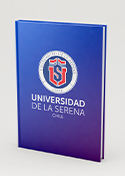Colour and infall time distributions of satellite galaxies in simulated Milky-Way analogues
| dc.contributor.author | Pan, Y. | |
| dc.contributor.author | Simpson, C. M. | |
| dc.contributor.author | Kravtsov, A. | |
| dc.contributor.author | Gómez, F. A. | |
| dc.contributor.author | Grand, R. J. J. | |
| dc.contributor.author | Marinacci, F. | |
| dc.contributor.author | Pakmor, R. | |
| dc.contributor.author | Manwadkar, V. | |
| dc.contributor.author | Esmerian, C. J. | |
| dc.date.accessioned | 2024-05-23T20:51:37Z | |
| dc.date.available | 2024-05-23T20:51:37Z | |
| dc.date.issued | 2023-01-09 | |
| dc.description.abstract | We use the Auriga simulations to probe different satellite quenching mechanisms operating at different mass scales (10(5) M-theta ? M * < 10(11) M ((R))) in Milky Way-like hosts. Our goal is to understand the origin of the satellite colour distribution and star-forming properties in both observations and simulations. We find that the satellite populations in the Auriga simulations, which was originally designed to model Milky Way-like host galaxies, resemble the populations in the Exploration of Local VolumE Satellites (ELVES) Surv e y and the Satellites Around Galactic Analogs (SAGA) survey in their luminosity function in the luminosity range -12 ? M-V ? -15 and resemble ELVES in their quenched fraction and colour-magnitude distribution in the luminosity range -12 ? M-g ? -15. We find that satellites transition from blue colours to red colours at the luminosity range -15 ? Mg ? -12 in both the simulations and observations and we show that this shift is driven by environmental effects in the simulations. We demonstrate also that the colour distribution in both simulations and observations can be decomposed into two statistically distinct populations based on their morphological type or star-forming status that are statistically distinct. In the simulations, these two populations also have statistically distinct infall time distributions. The comparison presented here seems to indicate that this tension is resolved by the impro v ed target selection of ELVES, but there are still tensions in understanding the colours of faint galaxies, of which ELVES appears to have a significant population of faint blue satellites not reco v ered in Auriga. | |
| dc.identifier.citation | Pan, Y., Simpson, C. M., Kravtsov, A., Gómez, F. A., Grand, R. J. J., Marinacci, F., . . . Esmerian, C. J. (2023). Colour and infall time distributions of satellite galaxies in simulated Milky-Way analogues. Monthly Notices of the Royal Astronomical Society, 519(3), 4499-4513. https://doi.org/10.1093/mnras/stac3663 | |
| dc.identifier.issn | 0035-8711 | |
| dc.identifier.other | 1365-2966 | |
| dc.identifier.uri | https://conocimientoabierto.online/handle/123456789/39 | |
| dc.language.iso | en | |
| dc.publisher | MONTHLY NOTICES OF THE ROYAL ASTRONOMICAL SOCIETY | |
| dc.subject | galaxies: dw arf | |
| dc.subject | galaxies: evolution | |
| dc.subject | galaxies: groups: general | |
| dc.subject | galaxies: interactions | |
| dc.subject | galaxies: star formation | |
| dc.subject | STELLAR POPULATION SYNTHESIS | |
| dc.subject | STAR-FORMATION HISTORIES | |
| dc.subject | DWARF GALAXIES | |
| dc.subject | LOCAL GROUP | |
| dc.subject | RAM PRESSURE | |
| dc.subject | RED SEQUENCE | |
| dc.subject | HI | |
| dc.subject | MASS | |
| dc.subject | EVOLUTION | |
| dc.subject | REIONIZATION | |
| dc.title | Colour and infall time distributions of satellite galaxies in simulated Milky-Way analogues | |
| dc.type | Article |
Files
License bundle

- Name:
- license.txt
- Size:
- 1.71 KB
- Format:
- Item-specific license agreed to upon submission
- Description: